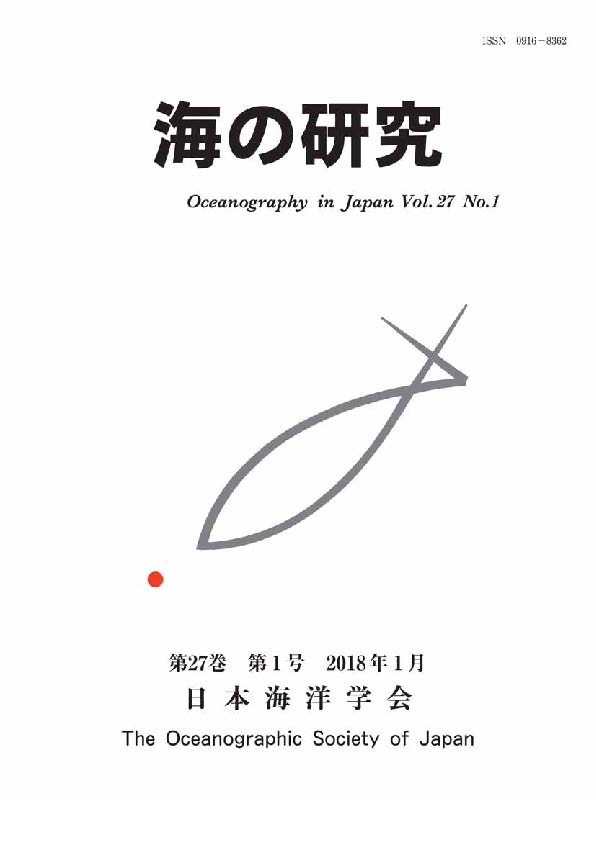
- Issue 6 Pages 251-
- Issue 5 Pages 149-
- Issue 4 Pages 113-
- Issue 3 Pages 63-
- Issue 2 Pages 15-
- Issue 1 Pages 1-
- |<
- <
- 1
- >
- >|
-
Kazunori Kuroda2017 Volume 26 Issue 6 Pages 251-258
Published: November 15, 2017
Released on J-STAGE: April 09, 2018
JOURNAL FREE ACCESSAs of January 2016, the Japan Meteorological Agency (JMA) had operated the repeat oceanographic survey for 50 years along the 137°E meridian, which was initiated in 1967 by Dr. Jotaro Masuzawa. The 137°E line, which is situated in the center of the Philippine Sea, traverses north and south across major currents in the subtropical gyre. Thus, those 50 years of data have produced substantial knowledge regarding the long-term variation in oceanic conditions, material circulations, and climate events. In this review, the author provides detailed deliberations on the initiation of the 137°E line by Dr. Masuzawa, and derives three factors that have contributed to the success of the line and some hints on the structure of present-day marine monitoring endeavors. The first is the presence of Dr. Masuzawa, who deeply studied the Kuroshio. The second is the study of the Philippine Sea, which has been an objective area of the CSK (Cooperative Study of the Kuroshio and Adjacent Regions) since 1965. The third is the construction of the R/V “Ryofu-Maru II”, which the JMA greatly anticipated, in 1966. In addition, Dr. Montgomery of the USA had suggested the importance of the Equator Current system and the necessity of the basin-scale repeat monitoring surveys to Dr. Masuzawa during his stay in the USA.
View full abstractDownload PDF (1410K)
- |<
- <
- 1
- >
- >|